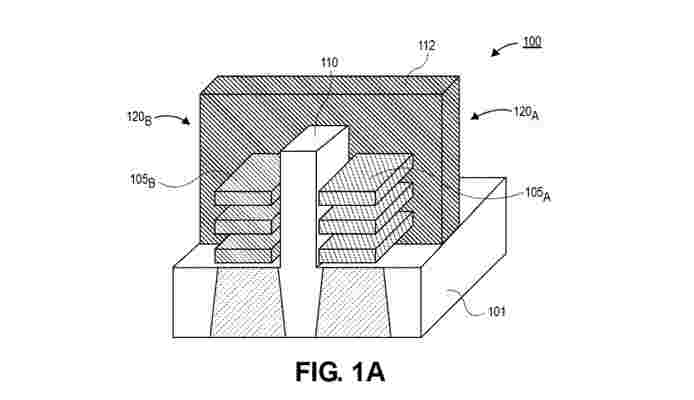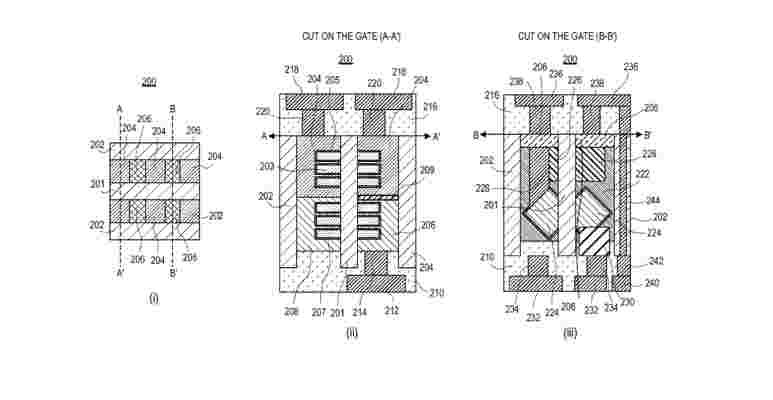5G doesn’t just have an availability problem (with much of the world still lacking coverage) it also has a branding problem – at least in the US, where there are several different flavors of 5G , and more than a few different names to go along with them.
One of those names is 5G Ultra Wideband, which started popping up for lots of Verizon users in January 2022, so if you’ve seen this on your phone, you might understandably be wondering what it is.
We’ll cover that below, along with explaining all the other names for 5G that are currently doing the rounds. Before we get to that though, it’s important to know what different 5G technologies are available.
Low frequency, C-band and mmWave
5G connections rely on radio waves known as spectrum, and this can operate at different frequencies. Broadly speaking, the frequencies used by 5G are split into three ranges.
First up there’s low frequency spectrum, which is generally considered to be anything under about 4GHz. This low frequency spectrum can travel a long way, and it’s also good at penetrating buildings and other obstacles, making it a convenient way to build up widespread 5G coverage.
But it doesn’t support especially high speeds, often coming in only a little faster than 4G LTE. You can expect download speeds that average over 100Mbps, but it less often passes 200Mbps.
To get a speed boost you need to move to higher frequency spectrum, such as C-band. This is basically the mid-band or mid-frequency, and officially covers frequencies in the range of 4-8GHz, though US carriers are currently considering spectrum in the 3.7-3.98GHz range to be C-band.
In any case, this supports much higher speeds, and while it’s not quite as long-range or robust at passing through obstacles as lower frequencies, it still does a reasonable job of both. TechRadar recorded a speed of 474.51Mbps using C-band 5G, which is far higher speed than is arguably even useful much of the time.
Finally, there’s mmWave (or millimeter wave), and this refers to spectrum of 24GHz and above. It’s not as widely used worldwide as the lower frequencies, and while it is used in the US, mmWave coverage is currently very limited.
That’s because providing mmWave coverage is tricky – all those benefits of low frequency spectrum are weaknesses of mmWave, as it’s short range and struggles with obstacles. That said, when you do get an mmWave signal it’s blazing fast, often offering speeds of well over 1Gbps.
What about sub-6GHz?
Sub-6GHz is often mentioned in the same breath as mmWave, and that’s because it’s a name that covers all the widely used 5G bands that don’t fall under mmWave – specifically bands of 6GHz or less.
So both C-band (or at least the C-band frequencies in current use) and low frequency 5G are considered sub-6GHz.
That said, depending on who you ask you might find spectrum of 1GHz and below isn’t considered part of the sub-6GHz range, despite being below 6GHz. In those cases you’ll likely see these very low frequencies referred to as low-band or similar.
So what’s Ultra Wideband?
Ultra Wideband isn’t an official name for any 5G technology, rather it’s a marketing name used by Verizon.
The carrier refers to both its mmWave and C-band networks as 5G Ultra Wideband, so if you’re connected to any of those, then you might see those words on your phone’s status bar (or potentially 5G UW or 5G UWB, depending on your handset).
The carrier refers to slower, low frequency 5G as Nationwide 5G – though on your handset it might simply say ‘5G’.
But the names don’t end there, as the other US carriers have their own terminology. AT&T uses the term 5GE or 5G Evolution to describe an upgraded 4G network, which is to say not actually 5G at all. Then it uses just 5G for low frequency 5G, and 5G Plus for C-band and mmWave. So 5G Plus is the equivalent of 5G Ultra Wideband.
T-Mobile meanwhile uses Extended Range 5G to describe low frequency 5G, and Ultra Capacity 5G (also known as 5G UC) for C-band and mmWave. Though it isn’t actually planning to roll C-band spectrum out until 2023, so at the time of writing you’ll only see 5G UC on your status bar if you’re lucky enough to be in an mmWave area.

What does all this have to do with Apple’s Ultra Wideband?
While there are now entirely too many names for 5G, the 5G Ultra Wideband one could be extra confusing, because Apple and some other companies such as Google also use Ultra Wideband technology – and this has nothing to do with 5G.
Also known as UWB, this is a technology that is used by AirTags among other devices, and enables precise location tracking.
What about other countries?
US carriers only recently (as of January 2022) started using C-band 5G, and as a result the number of commonly used 5G terms recently skyrocketed, but in many countries C-band has been used for a while, and the terminology is less confusing.
In the UK for example 5G marketing terms are kept to a minimum – in most cases it’s all just ‘5G’, yet both low frequency and C-band spectrum is in use (no mmWave though at the time of writing).
Australia meanwhile uses low frequency, C-band and mmWave spectrum for 5G, but its mmWave coverage is negligible at the time of writing.
Which handsets work with the faster forms of 5G?
Not all 5G phones support every form of 5G, so even if you’re on a network with mmWave and in an area that has mmWave coverage for example, you’ll still need a compatible handset.
For the most part, most phones sold in a country will support the various 5G frequencies used there, but they won’t always support those used abroad. In the case of the UK, that also means some handsets don’t support mmWave – which isn’t much of a problem as no mmWave 5G is offered there, but one day it might be.
And even within a country not every 5G phone will necessarily support every 5G frequency, especially in the case of C-band in the US, which because it’s only newly been offered isn’t supported by every handset.
In some cases unsupported handsets could get support down the line via a software update, but others will never be capable of accessing this spectrum.
At the time of writing, it’s only the iPhone 13 range, the iPhone 12 range, the Samsung Galaxy S21 range, the Samsung Galaxy Z Fold 3 , Samsung Galaxy Z Flip 3 , and the Samsung Galaxy A13 that support C-band 5G in the US on all relevant carriers. The Google Pixel 6 range additionally supports it on AT&T, but not yet on Verizon.
Intel might have a plan to keep up with Moore's Law
Intel is a company in a spot of bother: TSMC, Apple, and other rivals are outpacing its chip technology and Moore's Law – literally created by Intel's founder – is starting to cause the chipmaker some headaches.
However a patent unearthed by Twitter user @Underfox3 has found that the company could well be developing a plan: stacking transistors on top of each other for better performance in less space. Now, of course, this is only a patent – companies patent weird and whacky things all the time for a variety of reasons, most likely to prevent competitors from getting the jump on them.
But there is something interesting about Intel thinking its way around the problem of how to squeeze more power into ever-smaller spaces - namely, if this design comes to fruition, Intel could be looking at sub-2 nanometer (nm) processes.
Intel calls the design "stacked forksheet transistors" and you can see why: the transitions would be stacked on top of each other.
As Intel explains : "A first transistor device includes a first vertical stack of semiconductor channels adjacent to an edge of the backbone. A second transistor device includes a second vertical stack of semiconductor channels adjacent to the edge of the backbone. The second transistor device is stacked on the first transistor device."

The end result from this extremely nerdy patent application is that Intel could create a 3D vertically-stacked CMOS architecture, allowing for increased transistor counts over today's current architectures – a huge boost for the company. The company does note however that, as it stands, the constraints are "overwhelming".
It's impossible to tell exactly what kind of performance uplift could be achieved by Intel's design, and the company conspicuously doesn't speculate, but TSMC moving from a 5nm process to a 3nm process resulted in 10% to 15% performance gains while using up to 30% less power.

Whether this patent ever makes it into production or not, it's interesting to see Intel working through the problem of how to squeeze more power out of less, especially as the company begins its transition under new CEO Pat Gelsinger. A sub-2nm process would be game changing, putting Intel in-line with Apple's incredibly impressive M1 series processors.
Via Tom's Hardware
Crash Bandicoot and Spyro could return now that Microsoft is acquiring Activision
The main discussion surrounding Microsoft’s acquisition of Activision Blizzard may have centered on Call of Duty’s future exclusivity , but what does the takeover mean for two other beloved franchises from the publisher’s library: Crash Bandicoot and Spyro? Toys for Bob, the studio responsible for the excellent Crash Bandicoot 4: It’s About Time and the Spyro The Dragon: Reignited, was later folded into supporting Call of Duty games, which seemed like a horrendous waste of resources and obviously jeopardized the possibility of any future Crash Bandicoot or Spyro games.
Thankfully, it seems that Microsoft Gaming CEO Phil Spencer has plans to free some of Activision Blizzard’s smaller studios from the Call of Duty grind, which is great news for fans of the cheeky marsupial and little purple dragon.
“We’re hoping that we’ll be able to work with them when the deal closes to make sure we have resources to work on franchises that I love from my childhood, and that the teams really want to get,” Spencer told the Washington Post . “I’m looking forward to these conversations. I really think it’s about adding resources and increasing capability.”
Analysis: could we see Banjo-Kazooie return?

With a proven track record of resurrecting and remastering classic titles, Toys for Bob could also be the perfect developer to handle a long-requested Banjo-Kazooie game. The bird and bear haven’t received a genuine entry in the series since 2006’s Banjo-Kazooie: Nuts & Bolts, which was a divisive game, to say the least.
Beenox, another Activision Blizzard studio that was pulled into helping develop Call of Duty, could also benefit from Microsoft’s extra resources. The team made the excellent Tony Hawk’s Pro Skater 1 + 2 along with Crash Team Racing: Nitro-Fueled, and it would be great to see Beenox work on more games of this ilk in the future.
Activision Blizzard CEO Bobby Kotick has already said that it believes Microsoft could bring back Guitar Hero if the acquisition is successful.
“[Xbox Gaming CEO] Phil [Spencer] and I started riffing on things for the future,” Kotick said to VentureBeat . “I’ll give you three that are really compelling. I wanted to make a new Guitar Hero for a while, but I don’t want to add teams to do manufacturing and supply chain and QA for manufacturing. And the chip shortages are enormous.
“We didn’t really have the ability to do that. I had a really cool vision for what the next Guitar Hero would be, and realized we don’t have the resources to do that.”
Microsoft’s takeover of Activision Blizzard doesn’t just impact the future of Call of Duty , then. The company will gain access to a library of popular IPs and talented studios, some of which have remained dormant for too long. Hopefully, Microsoft can finally give them the attention they deserve.